Disclosure: This article contains affiliate links. We may earn a commission from purchases at no extra cost to you, which helps our travel content.
The first time I stepped onto Rio's streets, I felt that familiar tingle of discovery—the same sensation I get when tracking wildlife through Darwin's forests. But here, the ecosystem is human: a vibrant tapestry of neighborhoods each with its own rhythm, scent, and story. Having spent a week traversing Rio's urban landscape last spring, I've mapped a journey through its most captivating barrios that reveals how this city seamlessly blends natural splendor with cultural richness, much like the intertwined ecosystems I study back home.
Copacabana & Ipanema: Beyond the Iconic Shorelines
Most visitors begin their Rio journey along these legendary beaches, but there's so much more than sunbathing to experience here. While the postcard views of Sugarloaf Mountain framing golden sands are indeed breathtaking, I found myself drawn to the neighborhood's interior pulse.
Wander just three blocks inland from Copacabana Beach and you'll discover the real carioca lifestyle. Each morning, I joined locals at Cafe Cafeína, a tiny corner establishment where baristas craft the perfect cafezinho (strong Brazilian coffee) while neighborhood elders debate politics with animated gestures. The nearby Copacabana Fort offers both historical context and stunning views without the crowds of more famous lookouts.
In Ipanema, Sunday's Hippie Fair at Praça General Osório transforms the neighborhood into an open-air gallery where I found my favorite souvenir—a hand-carved wooden toucan that now watches over my ranger station back in Darwin. As dusk approaches, forget the tourist traps and head to Polis Sucos for açaí bowls so authentic they'll recalibrate your understanding of this Amazonian superfruit.
When the afternoon heat intensifies, nothing beats having a reliable insulated water bottle to keep your water ice-cold while exploring these beachfront neighborhoods. Mine hasn't left my side through countless global adventures.

💡 Pro Tips
- Visit Copacabana Fort early on weekday mornings to avoid crowds and catch fishermen bringing in their morning catch
- For the best açaí in Ipanema, skip the beachfront stands and walk to Polis Sucos on Rua Maria Quitéria
- Sunday evenings at Arpoador rock between Copacabana and Ipanema offer sunset views that locals applaud—literally
Lapa & Centro: Cultural Heart and Historical Soul
If Copacabana represents Rio's body, then Lapa and Centro form its beating heart. These central neighborhoods pulse with history, from colonial architecture to samba's rhythmic birthplace. My exploration began at the Metropolitan Cathedral, whose conical structure initially struck me as incongruous until I stepped inside to discover how its stained glass windows transform harsh sunlight into a mystical kaleidoscope.
Lapa's famous Selarón Steps—the life's work of Chilean artist Jorge Selarón—offer a perfect metaphor for Rio itself: colorful, somewhat chaotic, deeply personal yet universally appealing. I spent an entire afternoon photographing individual tiles, each with its own story. The steps get crowded, so arrive early or visit during weekday afternoons.
When night falls, Lapa transforms into Rio's premier nightlife district. Skip the obvious tourist spots and seek out Carioca da Gema, where I witnessed samba in its most authentic form. The club's intimacy means you'll feel every drumbeat reverberating through the wooden floors. Before heading out for a night of samba, I always apply natural mosquito repellent to keep the mosquitoes at bay—particularly important in Rio's humid evenings.
For lunch, the centuries-old Confeitaria Colombo in Centro transported me to Rio's belle époque with its stained glass ceiling and ornate mirrors. Their pastéis de nata pair perfectly with strong Brazilian coffee, fueling further exploration of Centro's architectural treasures.
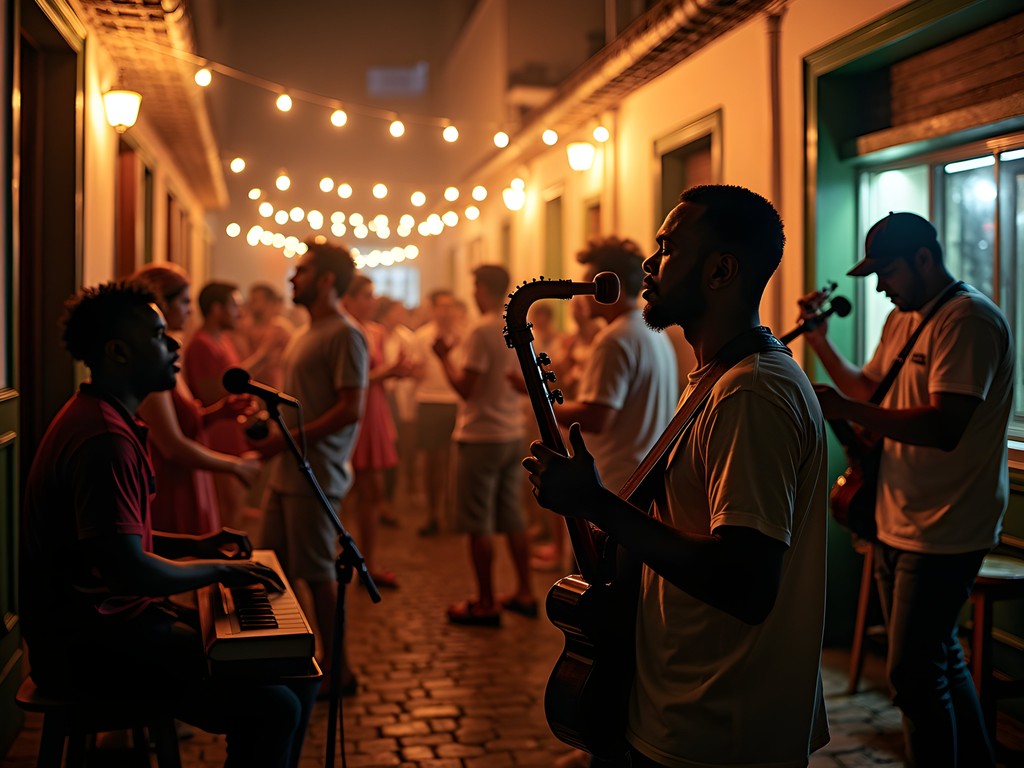
💡 Pro Tips
- Visit the Selarón Steps before 9am to avoid crowds and capture photos without tourists
- For authentic samba without the tourist markup, follow locals to Pedra do Sal on Monday nights
- Many Centro museums offer free admission on Wednesdays—plan accordingly
Santa Teresa: The Bohemian Hilltop Haven
After days immersed in Rio's urban intensity, Santa Teresa offered exactly the kind of transition zone I recognize from my ranger work—a space where different ecosystems meet and create something entirely unique. This hilltop neighborhood feels worlds away from the beaches below, with its winding cobblestone streets and colonial mansions converted into artists' studios.
The journey itself becomes part of the adventure. The historic tram (bonde) reopened in recent years, rattling its way up steep inclines with views that grow increasingly spectacular. However, I preferred hiking up through the neighborhood's edges where the Atlantic Forest reclaims forgotten corners—my background in forest ecology made me appreciate how nature persistently intertwines with urban development here.
Laranjeiras Park marks a perfect starting point for this ascent. I spotted more bird species in this urban green space than in some designated reserves! My quick-dry travel towel proved invaluable during this humid climb—lightweight enough to carry easily but absorbent enough to manage the tropical perspiration.
At Santa Teresa's summit, Parque das Ruínas offers the quintessential Rio panorama without Corcovado's crowds. The ruined mansion frame creates natural 'windows' to the city below—a photographer's dream at golden hour. Nearby, I discovered Aprazível restaurant, where tables nestled in a tropical garden offer both culinary and visual feasts. Their moqueca (seafood stew) rivals any I've tasted across Brazil.
The neighborhood's artistic spirit manifests in dozens of small galleries and studios. I spent hours at Ateliê Contemporâneo watching artists transform recycled materials into striking installations that comment on environmental challenges—a conversation that bridged my conservation work with their urban creativity.

💡 Pro Tips
- Take the Santa Teresa tram uphill but walk down to discover hidden alleys and viewpoints
- Visit Parque das Ruínas near sunset for golden light filtering through the ruins' windows
- Many Santa Teresa artists welcome studio visits—look for 'Atelier Aberto' signs
Botanical Garden & Tijuca Forest: Urban Wilderness
As a forest ranger, I couldn't visit Rio without exploring its remarkable claim to fame: housing the world's largest urban rainforest. Tijuca National Park represents one of humanity's earliest large-scale environmental restoration projects—the forest was replanted in the late 1800s after coffee plantations had stripped the hills bare.
Begin your exploration at Rio's Botanical Garden (Jardim Botânico), where over 6,500 plant species create a living encyclopedia of Brazilian flora. The garden's famous avenue of royal palms creates a natural cathedral that immediately silenced the urban noise in my mind. As a botanist's daughter, I found myself messaging my father photos of rare bromeliads and orchids, sparking excited identification discussions across continents.
From the gardens, numerous trails lead into Tijuca Forest proper. For couples seeking both adventure and accessibility, I recommend the trail to Cascatinha Taunay waterfall. The 40-minute hike offers progressive immersion into rainforest ecosystems without requiring advanced hiking skills. Along the way, watch for golden lion tamarins and toucans in the canopy.
For this hike, my waterproof dry bag proved essential for protecting camera equipment during a sudden tropical shower. Rio's weather can change rapidly, especially in spring.
More adventurous couples should consider hiring a local guide for the full-day trek to Pico da Tijuca, the forest's highest point. My guide, Eduardo from Rio Natural Ecotours, enhanced the experience immeasurably with his knowledge of both ecological systems and cultural history. He explained how the forest's restoration connects to contemporary conservation challenges—conversations that resonated deeply with my own work in Australia.
After a day of hiking, treat yourselves to dinner at Aprazível in Santa Teresa, where the rainforest-inspired cuisine creates a perfect conceptual bookend to your exploration. Their hearts of palm carpaccio highlights ingredients sustainably harvested from similar ecosystems to those you've spent the day discovering.

💡 Pro Tips
- Visit the Botanical Garden early on weekdays to have peaceful moments among the collections
- Pack a refillable water bottle, as drinking fountains are available throughout Tijuca Forest's main trails
- The Vista Chinesa lookout within Tijuca Forest offers spectacular city views with far fewer tourists than Corcovado
Navigating Between Worlds: Transportation Tips
Rio's neighborhoods sit like puzzle pieces between mountains and sea, creating a transportation challenge for visitors. While the metro system efficiently connects Copacabana and Ipanema to Centro and Lapa, reaching Santa Teresa and Tijuca requires different strategies.
For couples prioritizing flexibility, Rio's bike-sharing system offers an excellent option for coastal exploration. I spent one delightful afternoon cycling from Leblon to Copacabana, stopping whenever a viewpoint or interesting street scene caught my attention. Download the Bike Itaú app before arriving to streamline the rental process.
When venturing to Santa Teresa, the restored historic tram provides both transportation and experience in one. However, its limited schedule and popularity mean planning ahead. I found taking an Uber to the neighborhood's upper reaches and then wandering downhill offered the best balance of efficiency and discovery.
For Tijuca Forest access, consider hiring a driver for the day through your accommodation. This investment provides door-to-door service to trailheads that would otherwise require multiple transportation transfers. My hotel in Copacabana arranged a knowledgeable driver who suggested several viewpoints I hadn't discovered in my research.
When moving between neighborhoods after dark, ride-sharing services offer the safest option. I always carried a portable phone charger to ensure I never found myself without battery for transportation apps—particularly important when exploring less touristed areas like Santa Teresa's winding streets after sunset.
For a uniquely Rio experience, the ferry crossing to Niterói offers spectacular bay views for minimal cost. Even if you don't explore Niterói extensively, the journey itself—with Sugarloaf and Corcovado receding in the distance—provides a perspective on Rio's geography that helps connect the urban puzzle pieces in your mind.

💡 Pro Tips
- Purchase a rechargeable Riocard at the airport to use across all public transportation systems
- For Santa Teresa visits, take the tram up but walk down to discover hidden viewpoints and cafes
- Always have small bills available for neighborhood taxis that might not accept credit cards
Final Thoughts
As I boarded my flight back to Australia, I realized that Rio had taught me something profound about urban environments. Just as Australia's ecosystems thrive on diversity and interconnection, Rio's neighborhoods form a complex social ecosystem where each distinct area contributes to the city's overall resilience and character. The boundaries between neighborhoods—like the ecotones I study as a ranger—often hold the richest discoveries.
For couples exploring Rio, I recommend approaching the city as you would a natural landscape: with curiosity, respect, and an eye for patterns. Move between neighborhoods with intention, allowing each area's unique rhythm to reveal itself. Balance the iconic experiences with quiet moments of discovery. Let Copacabana's energy flow into Santa Teresa's contemplative artistry; contrast Centro's historical weight with Tijuca's natural freedom.
Rio doesn't just exist as a collection of tourist attractions but as a living organism where culture and nature have negotiated a complex coexistence. In this urban mosaic, I found echoes of my conservation work—reminders that humans and environments can adapt to each other in ways that preserve the essential character of both. When you visit, carry this awareness with you, and Rio will reveal layers of meaning beyond the postcard perfection it's known for.
✨ Key Takeaways
- Rio's neighborhoods each offer distinct experiences that together create a complete understanding of the city's character
- Moving between contrasting areas—from beaches to hilltop communities to urban forests—provides the richest travel experience
- Spring offers ideal conditions with fewer crowds than summer and perfect temperatures for both urban exploration and forest hiking
📋 Practical Information
Best Time to Visit
Spring (September-November)
Budget Estimate
$100-150 per day per person (mid-range)
Recommended Duration
7 days minimum
Difficulty Level
Moderate


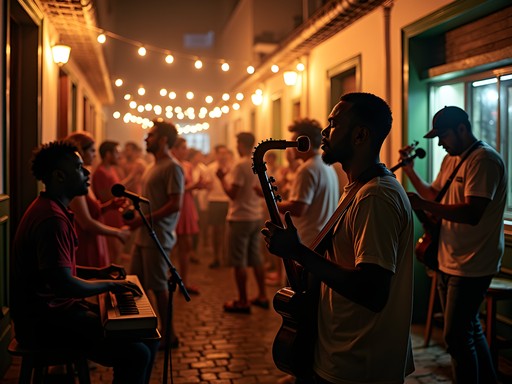

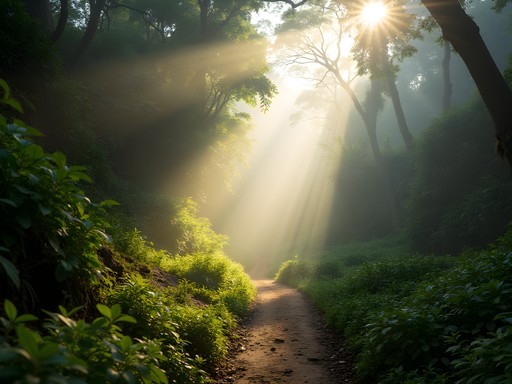







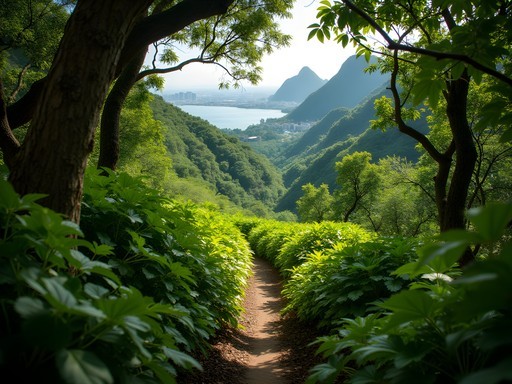
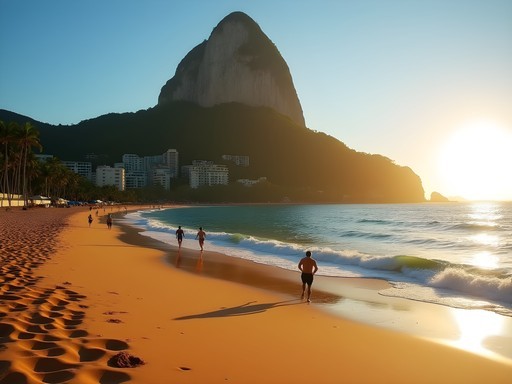
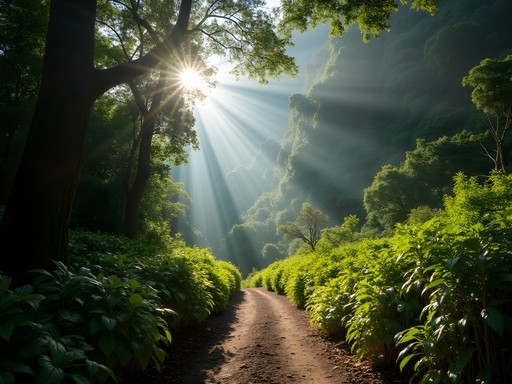

Comments
mountainrider4820
Maya, your comparison between tracking wildlife in Australia and exploring Rio's urban landscape is brilliant! As someone who's hiked across five continents, I totally get that sensation. We spent three days just in Santa Teresa last year and still didn't see it all. The Parque das Ruinas at sunset is absolutely magical - can't believe you caught that golden light in your photos. Did you try that little corner bar with live chorinho music? Hands down my favorite memory from Brazil.
springphotographer
Your photos of the mosaic steps are gorgeous! What camera settings did you use for those night shots in Lapa?
nomadclimber
Just got back from Rio last month and followed almost this exact neighborhood route! The contrast between Copacabana's beachfront energy and Santa Teresa's hilltop chill is what makes Rio special. We found this amazing little açaí place in Lapa that I'm still dreaming about. Pro tip: the Sunday hippie fair in Ipanema is worth planning around if you like artisan crafts.
springphotographer
That hippie fair is amazing! Got my favorite bracelet there.
Gregory Boyd
Maya's post captures the neighborhood contrasts beautifully. As a fellow Aussie, I appreciate the ecosystem analogy. My analysis of Rio after multiple visits: Copacabana is increasingly touristy but still worth it for the beach culture. The real gems are in the less-visited corners of Santa Teresa and the Friday night street parties in Lapa. The metro system is surprisingly efficient for getting between Centro and the beach areas. One crucial tip: the Tijuca Forest deserves at least a full day if you enjoy hiking - the biodiversity there is remarkable for an urban forest, with several trail options depending on your fitness level.
skychamp
OMG I LOVE RIO SO MUCH!!! The Lapa steps are even better in person! Did you try the caipirinha at that little bar near the arches?
wildfan
Is it safe to walk between these neighborhoods? First time visitor here and a bit nervous about safety in Rio.
Gregory Boyd
Having been to Rio multiple times, I'd recommend using Uber or official taxis between neighborhoods, especially after dark. During the day, the main tourist areas of Copacabana and Ipanema are generally fine for walking. Santa Teresa requires a bit more awareness - beautiful area but stick to populated streets. I always use my money belt in Rio just to be safe. Common sense goes a long way!
wildfan
Thanks for the advice! Will definitely look into transportation options.
Sophia Gomez
Maya, your comparison of Rio's neighborhoods to ecosystems is so spot on! I spent three weeks in Rio last year for a business conference and extended my stay to explore. Santa Teresa stole my heart - those winding cobblestone streets and that artistic energy are something else. I found this amazing little ceramics studio tucked away near Parque das Ruínas where the artist uses clay from different Brazilian regions. Did you get a chance to ride the historic tram? That rattling yellow bonde gave me some of my favorite memories of the city!
springphotographer
The bonde is such a classic experience! I got some of my best photos from that ride.
Sophia Gomez
@springphotographer I bet! The views as you climb up the hill are just magical. Did you visit any of the art galleries there?
escapeway
Those Santa Teresa views look incredible! Definitely adding to my bucket list.
moonbackpacker
Just got back from Rio last week and wish I'd seen this before going! Your tip about the little cafes in Santa Teresa is spot on - we stumbled on this tiny place with the most AMAZING pão de queijo and coffee with a view of the whole city. Next time I'll definitely check out that urban hiking trail in Tijuca you mentioned!
global_nomad
Your photo of the sunset from Santa Teresa is absolutely stunning! What time of year was this taken?
Maya Coleman
Thank you! That was taken in early June, right as the sun was setting around 5:30pm. The light in Rio during winter months is magical!
Venture X
Premium card with 2X miles, $300 travel credit, Priority Pass